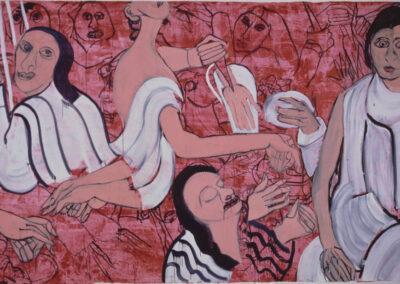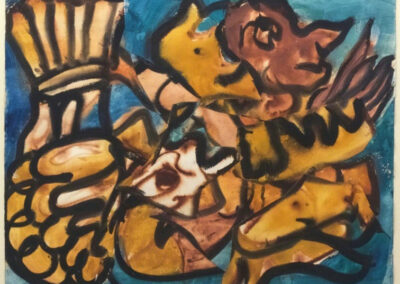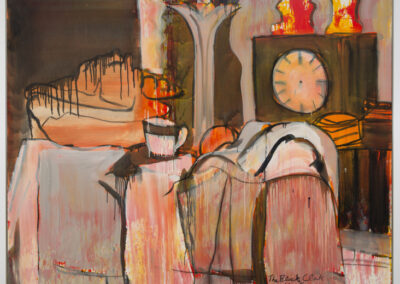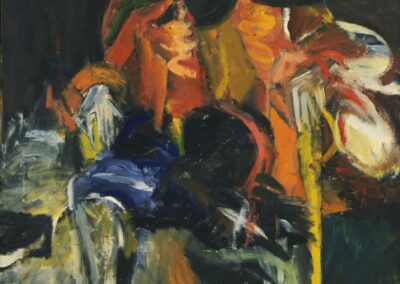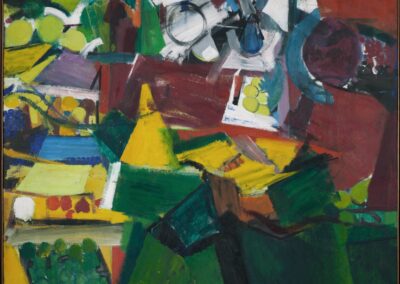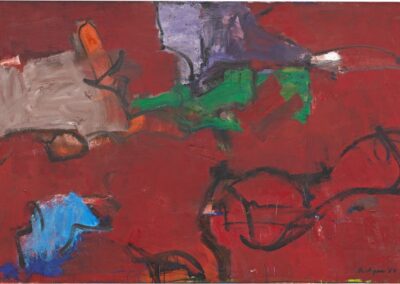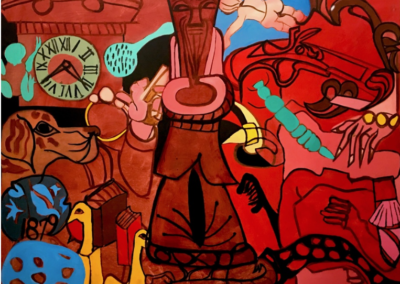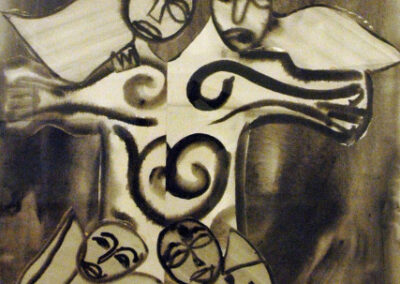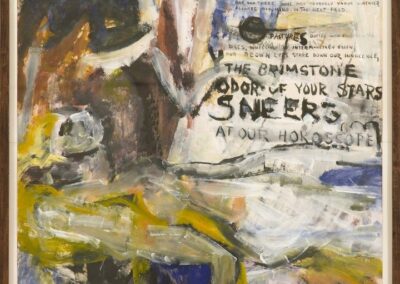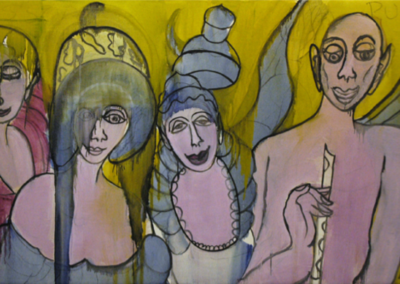Our next Artist You Need To Know is Grace Hartigan (1922 – 2008) who has been categorized as a second generation Abstract Expressionist but also an artist who helped point the way towards Pop art. Hartigan disdained either label. Unsurprisingly for an artist whose work incorporated such distinct yet differing tropes, Hartigan’s own words were quite direct: “I can hear my mother ever since I was a child saying ‘Grace you’re so dissatisfied—so restless.’” From Hartigan’s profile at MOMA: “This impulse to search, question, and change is a recurrent theme in Hartigan’s life and work. She alternated between abstraction and representation, flouting the art world’s expectations by embracing subjects deemed anathema in the early 1950s: people, clichés, and snippets from modern life. “I want an art that is not ‘abstract’ and not ‘realistic,’” she wrote, at a time when these choices were seen to exist in opposition.”
-
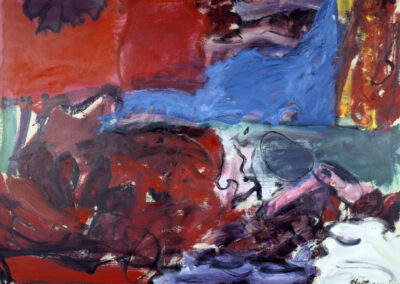
New York City Rhapsody, 1960
-

After Francisco Goya y Lucientes, 1954
-

Lady Macbeth, 1996
-

Jonah and the Whale, 1975
-

Hollywood Interior, 1993
-

Black Clock (After Cezanne), 1992
Hartigan was born in Newark, New Jersey in 1922: she would study, during the years of World War II, mechanical draftsmanship at the Newark College of Engineering. However, in 1945, she separated from her husband and relocated to the Lower East Side neighborhood of New York City, and proceeded to explore the vibrant (and nascent) Abstract Expressionist movement (Jackson Pollock, Willem de Kooning, and Adolph Gottlieb were her influences, and later were her peers). Her major breakthrough occurred in 1950, when Clement Greenberg and Meyer Schapiro chose her paintings to be included in the “New Talent” exhibition at Samuel Kootz Gallery. No less a space than Life magazine proclaimed Hartigan as “one of the best young female American painters.” This is interesting to note, as until 1953, Hartigan sometimes exhibited under the alias “George”, to subvert the dismissal and derision commonly displayed towards female artists, at that time.
More from MOMA: “In explaining the content and purpose of her work, Hartigan once said: “perhaps the subject of my art is like the definition of humor—emotional pain remembered in tranquility.” Hartigan painted intensely colored, gestural figures, inspired by coloring books, film, canonical painting, and advertising.”
-

The Persian Jacket, 1952
-

New England October, 1957
-

East Side Sunday, 1956
-

Essex and Hester (Red), 1958
-

Blood and Wine, 1975
-

Celtic Saint, 1978
Grace Hartigan’s work can be found in numerous collections. These include the Mennello Museum of American Art (Orlando, Florida), Museum of Modern Art / MOMA (New York), Smithsonian American Art Museum (Washington, D.C.), Solomon R. Guggenheim Foundation (New York and Venice), the Brooklyn Museum (New York), Whitney Museum of American Art (New York), Figge Art Museum (Iowa) and the Art Institute of Chicago. Her significance is not just through her exhibitions and presence in various collections, but she was also a teacher: she began teaching in the MFA Program (1965), and later became Director, at the Maryland Institute College of Art’s Hoffberger School of Painting.
-

Masquerade, 1954
-

Ireland, 1958
-

The Oranges, No. 1 (Black Crows), 1952
-

Meat, 1980
-

A Midsummer Night's Dream, 2007
-

Follies of 1927, 1989
Harold Rosenberg, one of the most significant art critics of the 1950s to 1970s, offered the following observation about Hartigan’s work: “the enemy of art is conformity, not just to the values of values of a totalitarian state or to a society of mass consumption, but to one’s own established style.”


